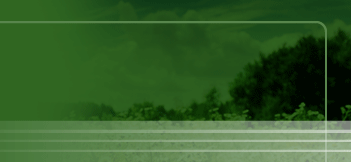Chauvigny
 |
 |
Chauvigny a medieval market town on the banks of the river Vienne , is located 23 Kms (30 miles) east of Poitiers and was built on a high rocky spur. The town grew up at the cross roads of two major routes of communication, an East-West route from the Atlantic towards Lyons, a North-South route linking northern France to southern France following the River Vienne.
The squires of Chauvigny and bishops of Poitiers made the most of its topographical position and built a fortress, which was extended increasingly until the XVth century; whilst the Lower Town developed along the Talbat stream as the industrial and commercial centre.
Archaeological digs have proven that a settlement existed here in Roman times. The seignory and consequently barony of Chauvigny belonged to the Bishops of Poitiers from the XIth century - a chauvinois family provided Poitiers with three bishops at this date - up until the French Revolution of 1789. During the Hundred Years Way the French King, John II, stayed in Chauvigny on the eve of his ill-fated Battle of Poitiers-Maupertuis against Edwards II, the Black Prince, in 1356.
Captured and laid in ashes by the English in 1369, Chauvigny was liberated by Duguesclin but was retaken by the Duke of Clarence in 1412. Re-captured by the French fifteen years later, the Scottish mercenaries of Charles VII were entrusted with the protection of the half-ruined baronnial chateau.
Hostilities resumed with the advent of the French wars of religion, when the baronnial chateau - become a Huguenot stronghold - was seized firstly by the king, then by Coligny, who had it burnt in 1569.
World War II also created ruins. As a result of being home to the harassing French Resistance, Chauvigny was shelled by the retreating German armies in 1944.
Chauvigny retained its Medieval planning and town boundaries until 1830. A more modern road network was laid towards the end of the century and changed the face of the town. A local railway network linked Chauvigny to surrounding towns and villages. The town hall (1900), other public buildings and sports facilities were also built around this time. Chauvigny is in the department of Vienne and has a population of 7,000
Originally situated in the town centre, the porcelain factory, trading under the well-known name of Apilco, opened an ultra-modern factory on the outskirts of Chauvigny at the Planty industrial park. At the nearby stone quarries (limestone), Rocamat also adopted the latest technology. Close-by stands the aerodrome, which complies with European specifications and allows for gliding and conventional flying. Chauvigny is a flourishing industrial town.
One can enjoy a three star camp site (free), shaded parking facilities, picnic areas, staked out walks, a public park, swimming pool, tennis courts, gymnasium, archery, boules, mountain biking, cyclo-tourism and others.
Chauvigny, officially classified as a 'town of artistic interest' is above all a tourism centre. The Gouzon Keep, consolidated and restored is home to an industrial archaeology museum and the main attractions of the Upper Town. Not to be missed either are the nearby archaeological and social history museum and the Romanesque collegiate of Saint Peter with its unusual capitals. Guided tours of the Upper Town are under the aegis of the CNMHS. Also well worth a visit is the wonderful falconry display at the Baronial chateau.
Chauvigny is also twinned with Trino in Italy, Geisenheim in Germany and Banfora in Burkina Faso.
More information available from the Chauvigny website at:
http://www.chauvigny.fr/index.php/vie-institutionnelle/114-jumelage


